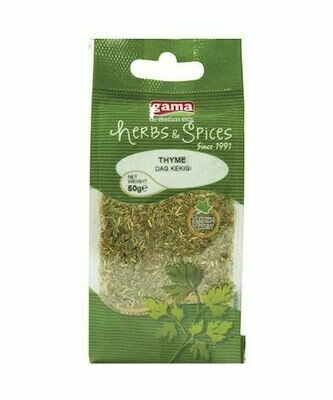

Woodhead Publishing Series in Food Science, Technology and Nutrition. ^ Stahl-Biskup, E Venskutonis, RP (2012).
#Thyme seasoning salloum bros full
Common thyme is a Mediterranean perennial which is best suited to well-drained soils and full sun.

Thymus vulgaris (common thyme, English thyme, summer thyme, winter thyme, French thyme, or garden thyme) is a commonly used culinary herb.It is also an important caterpillar food plant for large and common blue butterflies. The lowest growing of the widely used thyme is good for walkways. All thyme species are nectar sources, but wild thyme covers large areas of droughty, rocky soils in southern Europe (both Greece and Malta are especially famous for wild thyme honey) and North Africa, as well as in similar landscapes in the Berkshire and Catskill Mountains of the northeastern US. Thymus serpyllum (wild thyme, creeping thyme) is an important nectar source plant for honeybees.Thymus pseudolanuginosus (woolly thyme) is not a culinary herb, but is grown as a ground cover.Thymus praecox (mother of thyme, wild thyme), is cultivated as an ornamental.Thymus herba-barona (caraway thyme) is used both as a culinary herb and a ground cover, and has a very strong caraway scent due to the chemical carvone.


Usually, when a recipe specifies "bunch" or "sprig", it means the whole form when it specifies spoons, it means the leaves. Dried thyme is widely used in Armenia in tisanes (called urc).ĭepending on how it is used in a dish, the whole sprig may be used (e.g., in a bouquet garni), or the leaves removed and the stems discarded. A recipe may measure thyme by the bunch (or fraction thereof), or by the sprig, or by the tablespoon or teaspoon. It is composed of a woody stem with paired leaf or flower clusters ("leaves") spaced 15 to 25 millimetres ( 1⁄ 2 to 1 inch) apart. A sprig is a single stem snipped from the plant. įresh thyme is commonly sold in bunches of sprigs. However, the fresh form can last many months if carefully frozen. The fresh form is more flavourful but also less convenient storage life is rarely more than a week. While summer-seasonal, fresh greenhouse thyme is often available year-round. Thyme is a common component of the bouquet garni, and of herbes de Provence. In some Levantine countries, the condiment za'atar ( Arabic for both thyme and marjoram) contains many of the essential oils found in thyme. Seombaengnihyang-cha ( Ulleungdo thyme tea) Other components are carvacrol, linalool, α-terpineol, and 1,8- cineole. Gas chromatographic analysis reveals that the most abundant volatile component of thyme leaves is thymol 8.55 mg/g. It can be pruned after flowering to keep from getting woody. It grows well on dry slopes and is propagated by cuttings. The plant can take deep freezes and is found growing wild on mountain highlands. It can be propagated by seed, cuttings, or dividing rooted sections of the plant. It is generally planted in the spring, and thereafter grows as a perennial. Thyme is best cultivated in a hot, sunny location with well-drained soil. thymallus, described in the 1758 edition of Systema Naturae by Swedish zoologist Carl Linnaeus), originates from the faint smell of thyme that emanates from the flesh. The name of the genus of fish Thymallus, first given to the grayling ( T. Thyme was also used as incense and placed on coffins during funerals, as it was supposed to assure passage into the next life. In this period, women also often gave knights and warriors gifts that included thyme leaves, as it was believed to bring courage to the bearer. In the European Middle Ages, the herb was placed beneath pillows to aid sleep and ward off nightmares. The spread of thyme throughout Europe was thought to be due to the Romans, as they used it to purify their rooms and to "give an aromatic flavour to cheese and liqueurs". The ancient Greeks used it in their baths and burnt it as incense in their temples, believing it was a source of courage. Ancient Egyptians used thyme for embalming. Wild thyme grows in the Levant, where it might have been first cultivated. Thyme is indigenous to the Mediterranean region.


 0 kommentar(er)
0 kommentar(er)
